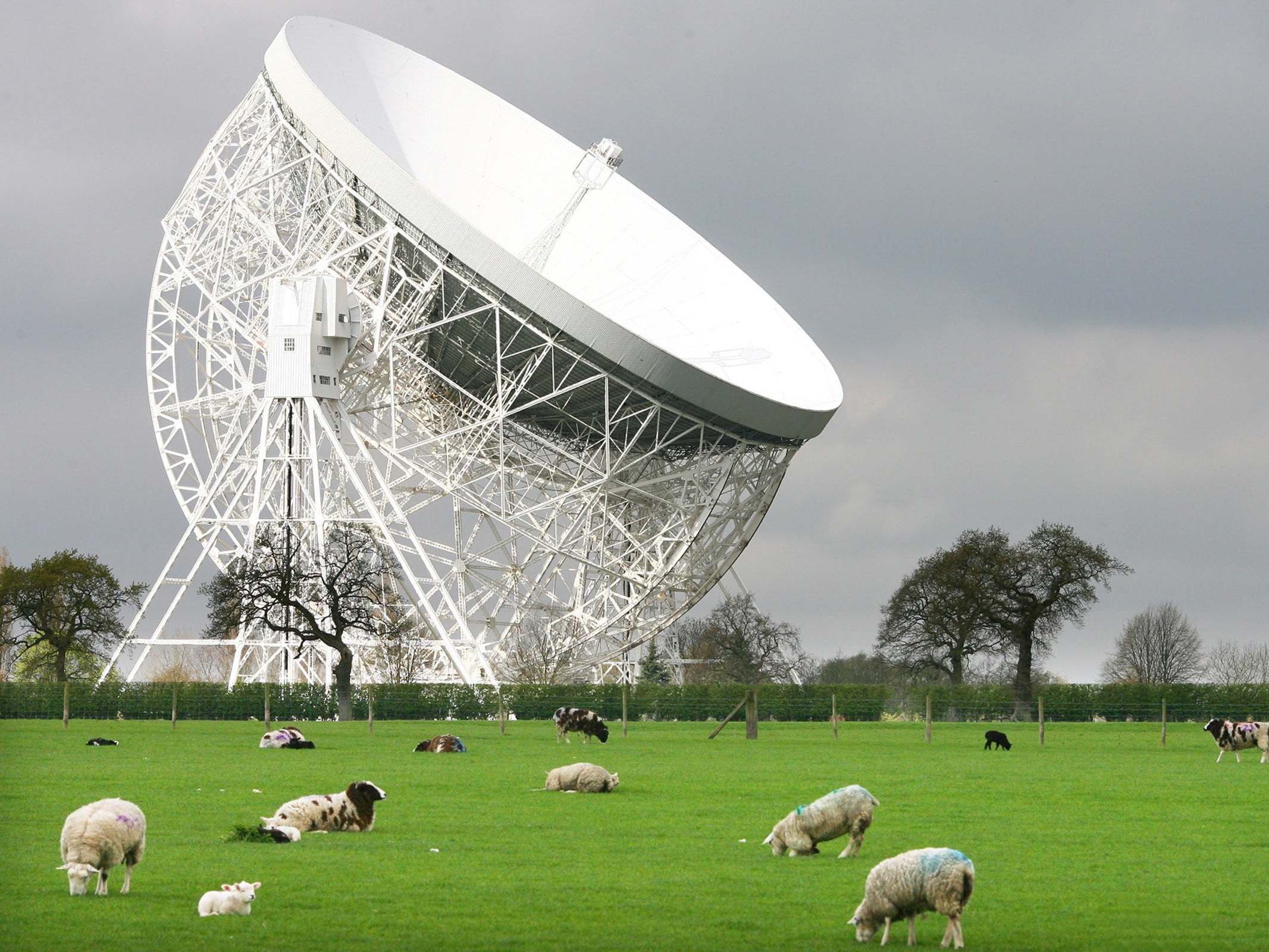Jodrell Bank Observatory given world heritage status by Unesco
Cultural site in Cheshire hosts 250ft-wide Lovell Telescope built in 1957

Your support helps us to tell the story
From reproductive rights to climate change to Big Tech, The Independent is on the ground when the story is developing. Whether it's investigating the financials of Elon Musk's pro-Trump PAC or producing our latest documentary, 'The A Word', which shines a light on the American women fighting for reproductive rights, we know how important it is to parse out the facts from the messaging.
At such a critical moment in US history, we need reporters on the ground. Your donation allows us to keep sending journalists to speak to both sides of the story.
The Independent is trusted by Americans across the entire political spectrum. And unlike many other quality news outlets, we choose not to lock Americans out of our reporting and analysis with paywalls. We believe quality journalism should be available to everyone, paid for by those who can afford it.
Your support makes all the difference.Jodrell Bank Observatory, which has played a leading role in astronomical research since 1945, has been added to the Unesco World Heritage List.
The site in Cheshire has contributed to the study of meteors and the moon, the discovery of quasars, quantum optics, and the tracking of spacecraft.
It is probably best known for the landmark Lovell Telescope, a steerable 250ft radio dish which was the largest in the world when it was built in 1957.
Weighing 3,200 tonnes, it can be seen for miles around, it is still the third-largest of its kind and has appeared in Doctor Who and Douglas Adams’ Hitchhiker’s Guide to the Galaxy.
Jodrell Bank, which is part of the University of Manchester, joins historic international sites such as Machu Picchu, the Great Wall of China and the Taj Mahal on the Unesco world heritage list.
Announcing the decision, Unesco said: “Located in a rural area of northwest England, free from radio interference, Jodrell Bank is one of the world’s leading radio astronomy observatories. This exceptional technological ensemble illustrates the transition from traditional optical astronomy to radio astronomy (1940s to 1960s), which led to radical changes in the understanding of the universe.”
The observatory was the only UK site nominated during the 43rd session of the World Heritage Committee. Others included the ancient ruins of Babylon in Iraq and Bagan in Myanmar.
Teresa Anderson, director of the Jodrell Bank Discovery Centre, said: “This is wonderful news and a great day in the history of Jodrell Bank. It honours the pioneering work of Sir Bernard Lovell and the early scientists here, together with the world leading research that continues to this day.
“Receiving this recognition will help us tell their story and the story of the communities connected to the site both across the UK and worldwide.”
Jodrell Bank now joins 31 other World Heritage sites in the UK, including Stonehenge and the Giant’s Causeway.
Heritage minister Rebecca Pow said: “I am delighted that Jodrell Bank has become the UK’s 32nd Unesco World Heritage Site. The research completed here has transformed our understanding of the universe and it is right that this is recognised. Today’s announcement will make sure that this remarkable site will continue to inspire young scientists and astronomers all over the world.”
Additional reporting by Press Association
Join our commenting forum
Join thought-provoking conversations, follow other Independent readers and see their replies
Comments